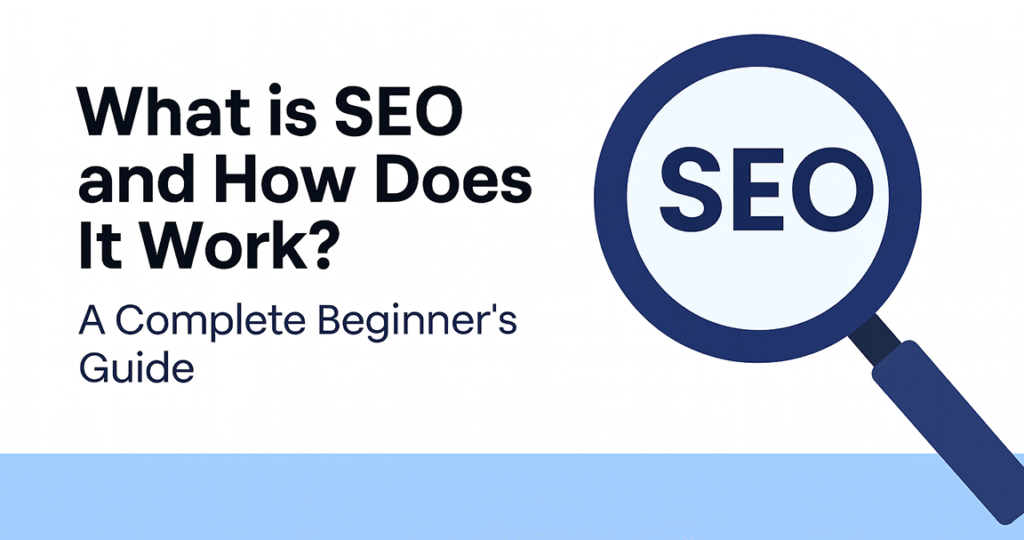
This is one of the most common questions in digital marketing today. SEO (Search Engine Optimization) is the process of improving your website so it appears higher in search engine results. In today’s digital-first world, simply having a website isn’t enough. If your business isn’t visible on search engines, your competitors will capture the audience you’re trying to reach.
What is SEO?
Search Engine Optimization (SEO) is the practice of enhancing your website so it ranks higher in search engine results pages (SERPs). The goal is to connect your website with users who are actively searching for the solutions you provide. This involves a mix of technical adjustments, keyword optimization, and authority-building practices. Unlike paid advertising, which stops once your budget runs out, SEO delivers sustainable visibility and long-term business growth.
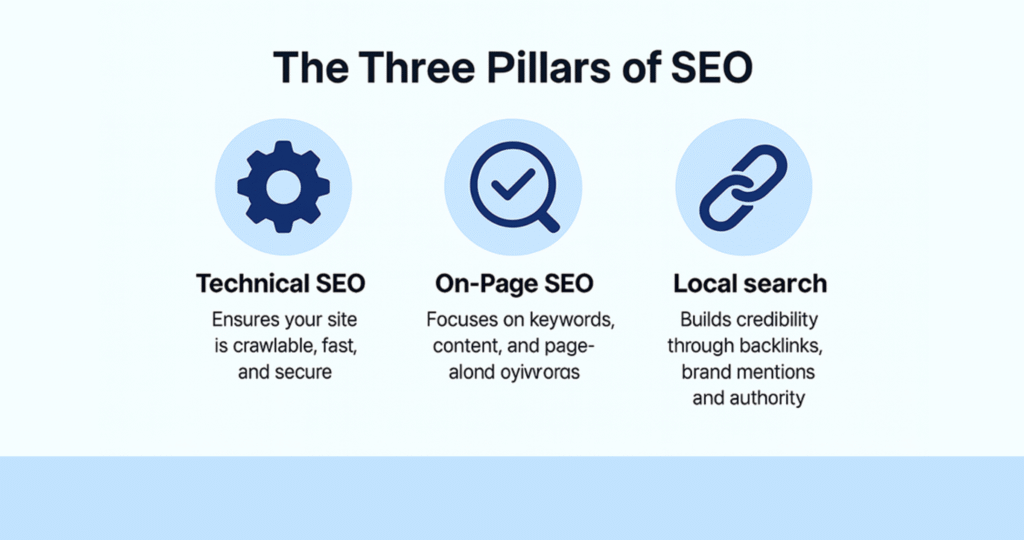
SEO is built on three interconnected pillars. Understanding and applying all three ensures your website performs well in search rankings.
Off-Page SEO – Builds authority through external signals such as backlinks, social media activity, online directories, and brand mentions. Off-page SEO shows search engines that your site is trusted and relevant.
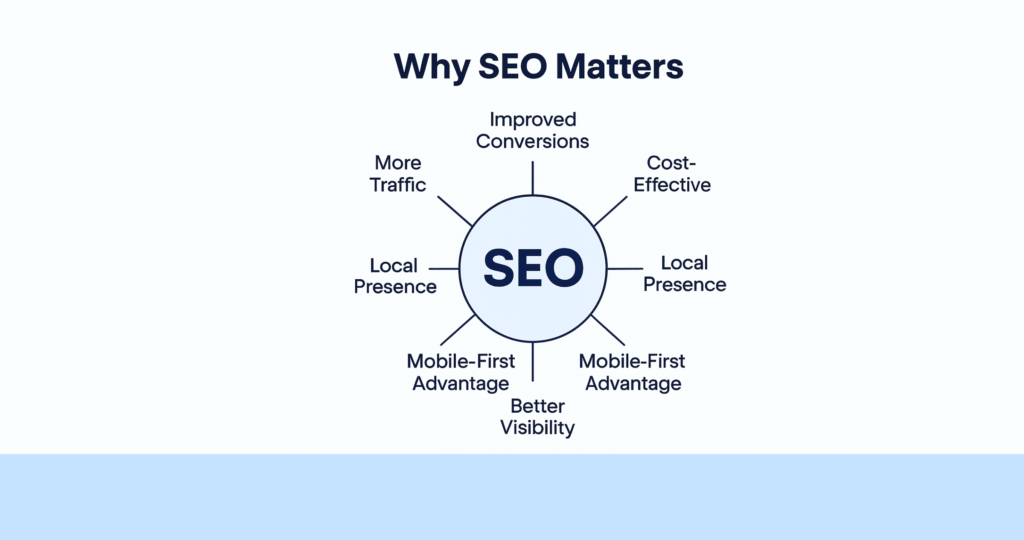
SEO is more than just rankings—it’s about driving measurable business results. Here’s why it matters for every business:
– More traffic – Ranking higher generates consistent, qualified visitors to your site.
– Brand visibility – Strong SEO makes your brand more discoverable and trustworthy.
– Conversions – SEO brings in users already searching for your solutions, making them more likely to convert.
– Cost-effectiveness – While SEO requires time and effort, it produces long-lasting results without constant ad spend.
– Competitive advantage – Outranking competitors in search results helps capture market share.
– Mobile-first advantage – With most traffic coming from mobile, SEO ensures your site is mobile-optimized.
– Local presence – Local SEO allows you to target customers in your immediate geographic area, boosting foot traffic and local leads.
For example, a local bakery that optimizes its website for ‘best cakes near me’ can attract nearby customers actively looking to make a purchase.
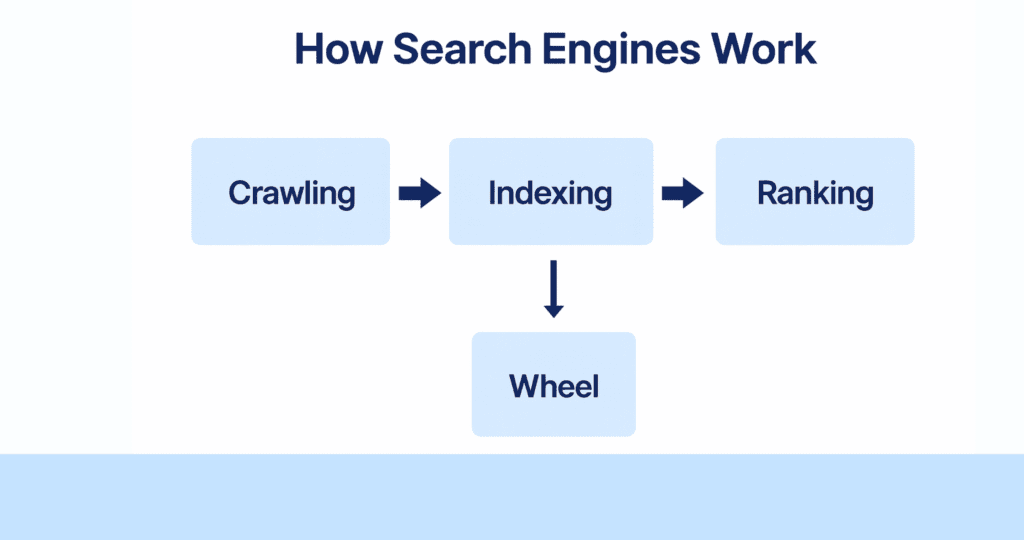
Search engines like Google use complex algorithms to discover, understand, and rank content. The process works in three main steps:
Tip: To see how many of your pages are indexed, type ‘site:yourdomain.com’ into Google. This simple check helps you understand your current visibility.
Paid search (PPC) and SEO both play important roles in digital marketing, but they function differently.
Paid Search (PPC): Provides instant visibility, targeted ads, and measurable results. However, traffic disappears as soon as you stop paying.
Organic Search (SEO): Takes longer to build but creates sustainable visibility and credibility. Once ranked, your pages can attract traffic for years without ongoing cost.
Best practice: Use both together—PPC for quick wins and SEO for long-term growth.
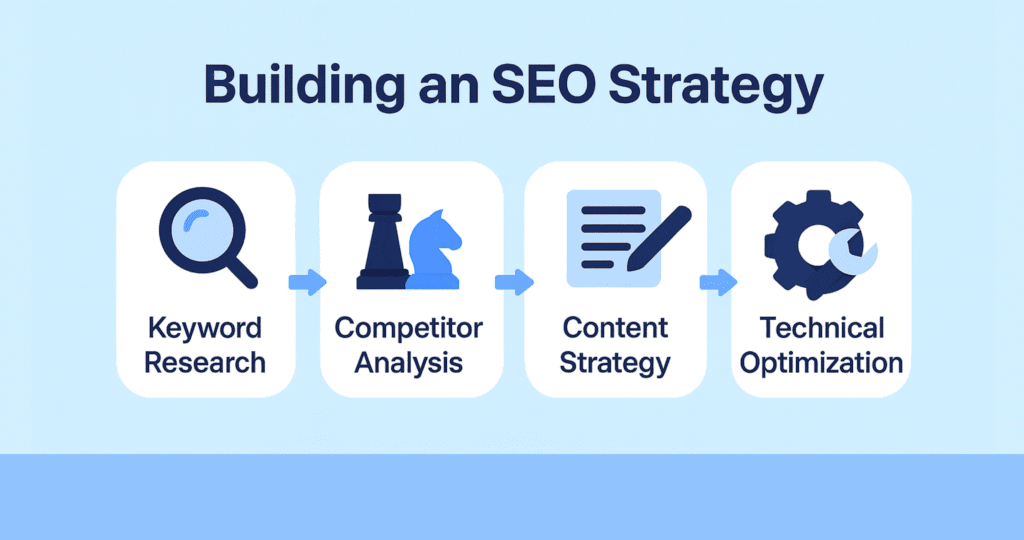
A strong SEO strategy combines research, content creation, and technical improvements. The key steps include:
Example: An e-commerce brand selling shoes might research ‘best running shoes 2025,’ analyze competing blogs, publish a detailed buying guide, and optimize the product pages for speed and user experience.

SEO is data-driven, and the right tools can help you research keywords, analyze competitors, audit websites, and monitor progress. Popular tools include:
– Google Search Console – Monitor indexing, fix errors, and track keyword performance.
– Google Analytics – Understand user behavior, traffic sources, and conversions.
– SEMrush – Full-suite SEO platform for keyword research, auditing, and tracking competitors.
– Ahrefs – Popular for backlink analysis and keyword research.
– Moz Pro – Great for rank tracking and keyword analysis.
– Ubersuggest – Beginner-friendly SEO and keyword tool.
– Screaming Frog – Desktop tool to crawl websites for errors and insights.
– Yoast SEO – A WordPress plugin that makes on-page SEO easy.
– Surfer SEO – Content optimization tool based on real-time SERP data.
– AnswerThePublic – Helps generate blog and FAQ ideas from actual user questions.
– Link Whisper – Automates internal linking strategies.
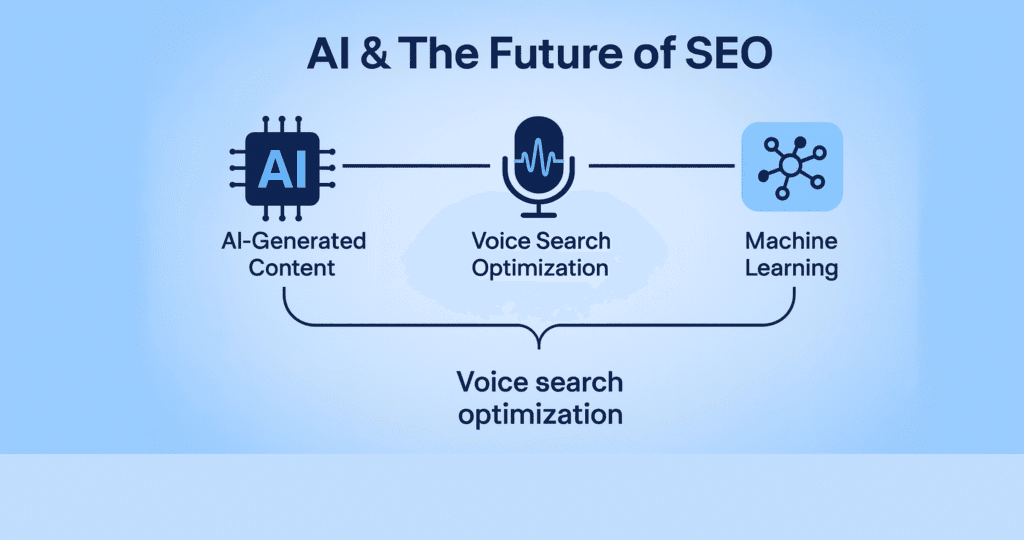
Artificial Intelligence is revolutionizing SEO, making it smarter and more adaptive. Trends shaping the future include:
– AI-powered content creation – Tools like ChatGPT can generate optimized content drafts faster.
– Voice search optimization – With voice assistants on the rise, businesses must optimize for natural, conversational queries.
– Machine learning algorithms – Google’s RankBrain constantly improves how search results are ranked.
For example, voice queries like ‘best Italian restaurant near me’ require conversational SEO strategies. Optimizing content for natural speech can capture this growing audience.
SEO is not a one-time effort—it’s an ongoing process. When executed effectively, SEO provides compounding benefits over time, helping businesses build authority, attract steady traffic, and improve conversions. By focusing on technical foundations, relevant content, and building trust signals, you position your brand for long-term digital success.
View all
Need help? Let’s chat!
